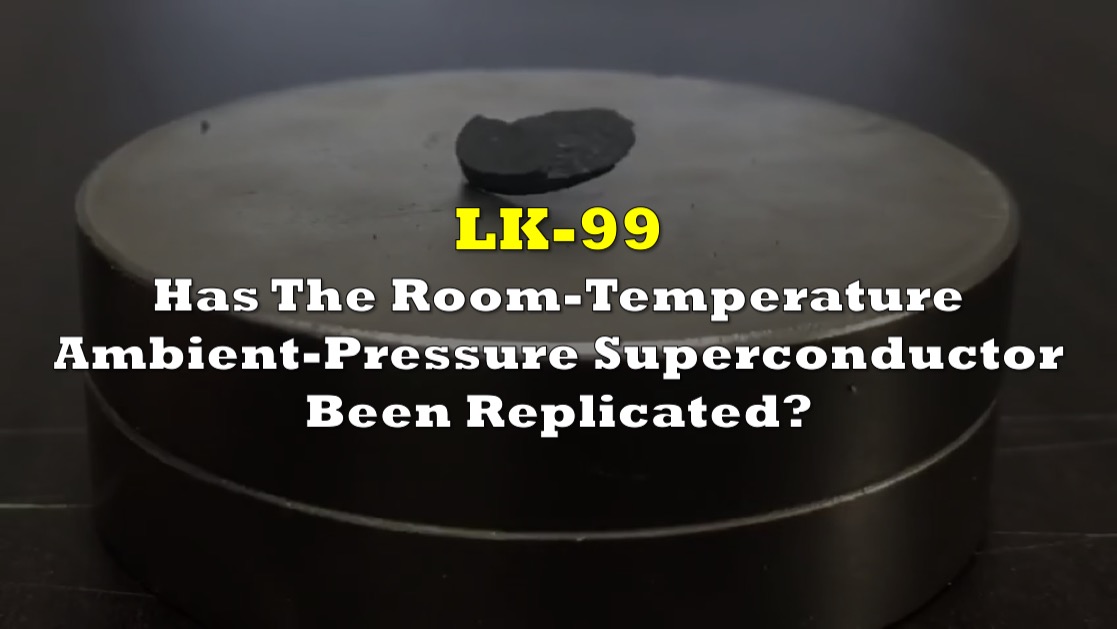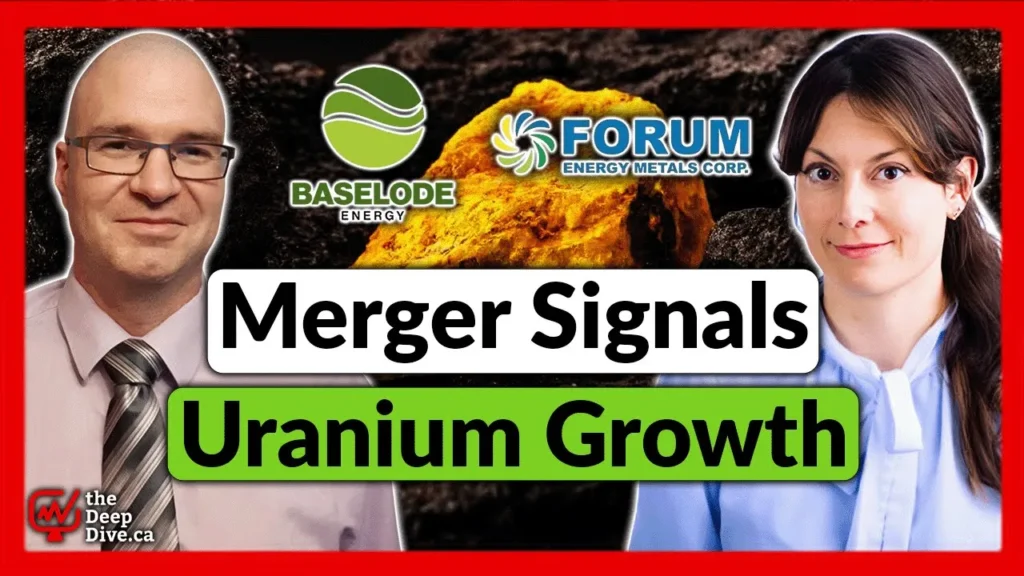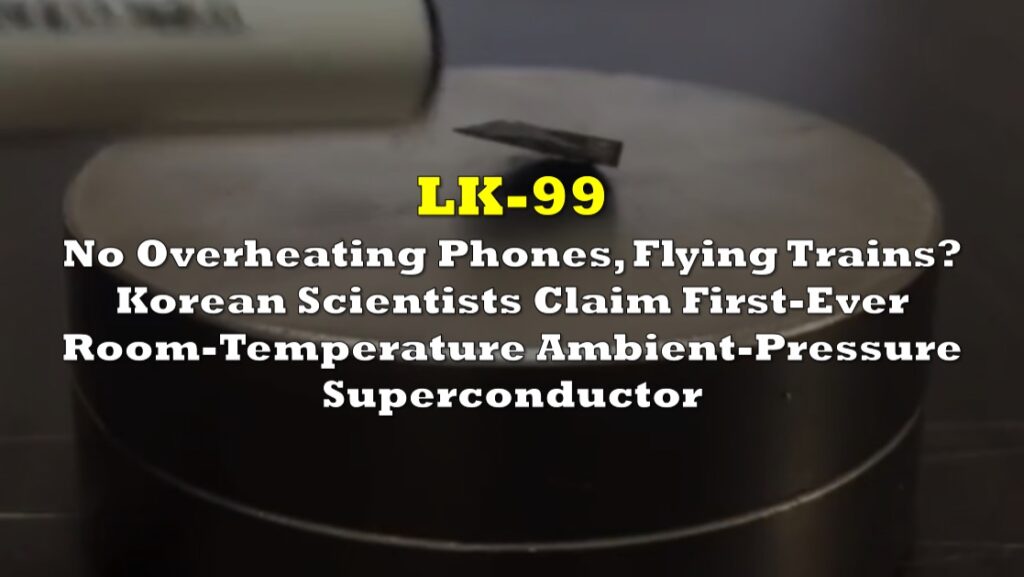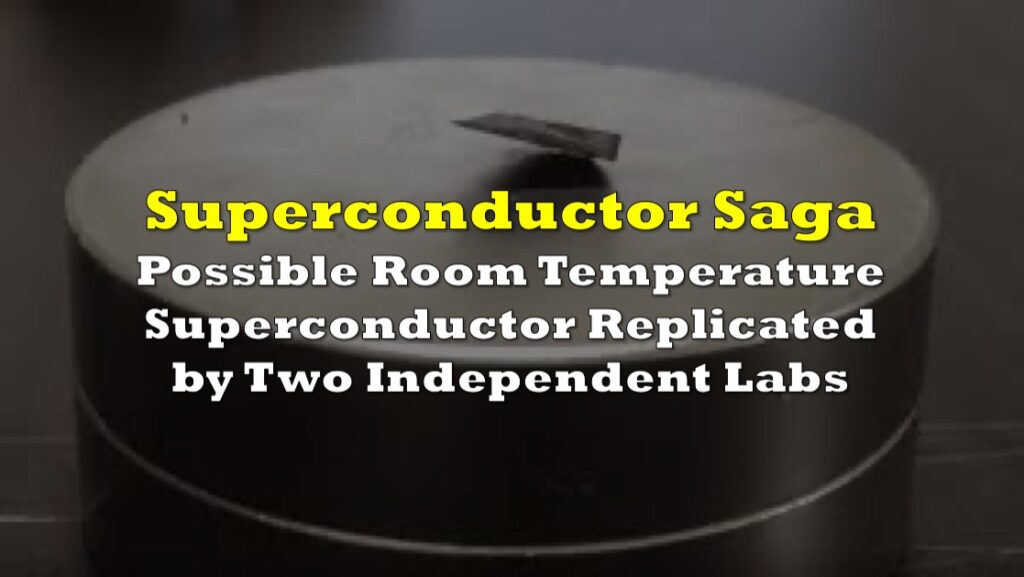In an extraordinary turn of events, the scientific world is buzzing with excitement over the recent claims of a room-temperature superconducting material called LK-99. The preprints, published just last week, have sparked heated debates, hope, and some skepticism among researchers in the field.
If confirmed, this discovery could revolutionize industries that heavily rely on electromagnetism, from energy transmission to transportation and beyond.
Superconductors are materials that exhibit zero electrical resistance and the ability to expel magnetic fields, enabling highly efficient electricity flow without energy loss. Until now, superconductors could only operate at extremely low temperatures, often requiring expensive and cumbersome cooling systems. Achieving superconductivity at ambient pressure and temperature has been a long-standing dream of scientists and engineers worldwide.
The claim of LK-99 being a room-temperature superconductor is nothing short of extraordinary, and it demands rigorous verification. As is often the case with groundbreaking claims, the challenge lies in replication.
In a commentary piece for Science.org, author Derek Lowe noted that several labs have reportedly attempted to reproduce the experimental preparation of LK-99, but the process is not straightforward. The material’s polycrystalline and heterogeneous nature, along with the various factors affecting its properties, introduces significant variability in the results.
“The experimental preparation of LK-99 was not very complicated at all, though, and did not use any particularly exotic materials or equipment, so the expectation was that many labs would immediately try to reproduce it,” Lowe wrote.
Complicating matters further, infighting among the authors of the preprints has raised eyebrows. The situation with two different preprints—one with three authors and the other with six—has resulted in speculation and confusion within the scientific community. Allegations suggest that one preprint may be withdrawn due to a lack of collaboration among the authors, while the other is being prepared for submission to a peer-reviewed journal.
However, as of August 1, there have been unverified reports of replication from Huazhong University of Science and Technology in China. A video has surfaced showing what could be a sample of LK-99 levitating over a magnet, a phenomenon known as the Meissner effect, characteristic of superconductors. Yet, researchers remain cautious and are not jumping to conclusions based solely on the video’s evidence.
Second #lk99 replication from China pic.twitter.com/jcI3C35hxF
— LERE (@lere0_0) August 1, 2023
Intriguingly, two other preprints have surfaced, offering valuable insights into the potential validity of LK-99. Researchers at the Shenyang National Laboratory for Materials Science and Lawrence Berkeley have used density functional theory (DFT) calculations to assess LK-99’s predicted behavior based on reported X-ray structural data. The calculations indicate that LK-99 may indeed be a promising superconductor. The flat bands crossing the Fermi level suggest that strongly correlated bands in the material could drive superconductivity, providing hope that new physics may not be necessary to explain LK-99’s properties.
WE ARE OFFICIALLY BACK@sineatrix finds a theoretical basis for superconductivity in Cu-doped Lead Apatite.
— Alex Kaplan (@alexkaplan0) August 1, 2023
Isolated flat bands at the Fermi level is a hallmark of superconducting crystals. LK99 has it!!!!
This is huge pic.twitter.com/vRVt5KsBtS
However, these preprints also point to the challenges in reproducing LK-99. Variability in the material’s behavior may arise from different substitution sites for copper atoms and the material’s sensitivity to structural distortions at low temperatures. Additionally, the possibility that LK-99’s superconductivity might be limited to specific crystal axes raises concerns about the viability of polycrystalline samples.
In an X (formerly Twitter) post, so-called Stellarator engineer Andrew Cote explained that LK-99 has three distinct engineering scenarios and estimated market sizes:
- Scenario 1: Low-field, low-current (~$1.5 trillion market): LK-99 works at relatively low magnetic fields and current densities, making it suitable for delicate electronics, high-efficiency devices, and high-sensitivity applications in industries like telecom hardware, cellphones, electronic sensors, satellites, GPUs, CPUs, and antennas.
- Scenario 2: Low-field, high-current (~$2 trillion market): LK-99 can carry large current densities but can’t withstand strong magnetic fields. It finds relevance in power transmission, switches, relays, and larger electrical equipment, with applications in industries such as power transmission, wires and cables, and switches and relays.
- Scenario 3: High-field, high-current (~$4.5 trillion market): LK-99 operates in high magnetic fields and high current densities, revolutionizing industries by replacing motors, generators, and transportation equipment, and unlocking new energy sources like fusion. It affects power generation, electric motors, rail freight, and energy storage industries.
Some important considerations include the material’s integration into micro-electronics, mechanical strain tolerances, and historical engineering progress of similar superconductors. The probability of LK-99 being a superconductor is estimated at 5%, but if Scenario 3 is achieved in the long term, it could lead to a market worth around $225 billion annually.
LK-99 Endgame: What Happens Next & Market Size
— Andrew Cote (@Andercot) August 2, 2023
If LK-99 is a room-temperature ambient-pressure superconductor, there are three distinct possibilities depending on its eventual engineering properties.
Here is a straightforward explanation of each scenario and estimated total…
Despite the promising theoretical calculations and the potential replication reports, scientists remain cautious about celebrating a definitive breakthrough. The coming days and weeks are expected to be critical in determining whether LK-99 is, indeed, the long-sought room-temperature superconductor the world has been waiting for.
Information for this story was found via Science.org and the sources mentioned. The author has no securities or affiliations related to the organizations discussed. Not a recommendation to buy or sell. Always do additional research and consult a professional before purchasing a security. The author holds no licenses.






